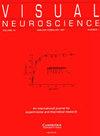Amblyopia: The clinician's view.
IF 2.3
4区 医学
Q4 NEUROSCIENCES
引用次数: 2
Abstract
During the summer of 2015, the Lasker/IRRF Initiative on Amblyopia convened two groups of scientists and clinicians with diverse backgrounds and expertise. The objective was to focus on a problem that seriously affects vision, and to see if new thinking and ideas might be helpful in the understanding of amblyopia and how these ideas can be applied to advance the field. At these sessions, David Hunter described what is currently known about this complex condition and identified the research and clinical challenges that persist. A summary of his presentation serves as an introduction to this report. As a practicing pediatric ophthalmologist, I continue to be frustrated by how frequently I encounter children with amblyopia when it is too late to restore normal or near-normal function. In this introduction to the Lasker/IRRF Initiative’s report Amblyopia: Challenges and Opportunities, I will provide the basics of amblyopia from a clinician’s view to provide common ground that facilitate open-ended discussions among clinicians and researchers interested in improving our understanding of this disease. I will present the current clinical definition of amblyopia and how we make the diagnosis, review what is understood about the cause and the nature of the deficit, provide an overview of current approaches to screening for the disease as well as its treatment, and place amblyopia in the context of its burden to the society. The current clinical definition of amblyopia is best provided by the American Academy of Ophthalmology’s Preferred Practice Pattern on Amblyopia (AAO Pediatric Ophthalmology/Strabismus Panel, 2012).弱视:临床医生的观点。
本文章由计算机程序翻译,如有差异,请以英文原文为准。
求助全文
约1分钟内获得全文
求助全文
来源期刊

Visual Neuroscience
医学-神经科学
CiteScore
2.20
自引率
5.30%
发文量
8
审稿时长
>12 weeks
期刊介绍:
Visual Neuroscience is an international journal devoted to the publication of experimental and theoretical research on biological mechanisms of vision. A major goal of publication is to bring together in one journal a broad range of studies that reflect the diversity and originality of all aspects of neuroscience research relating to the visual system. Contributions may address molecular, cellular or systems-level processes in either vertebrate or invertebrate species. The journal publishes work based on a wide range of technical approaches, including molecular genetics, anatomy, physiology, psychophysics and imaging, and utilizing comparative, developmental, theoretical or computational approaches to understand the biology of vision and visuo-motor control. The journal also publishes research seeking to understand disorders of the visual system and strategies for restoring vision. Studies based exclusively on clinical, psychophysiological or behavioral data are welcomed, provided that they address questions concerning neural mechanisms of vision or provide insight into visual dysfunction.
 求助内容:
求助内容: 应助结果提醒方式:
应助结果提醒方式:


